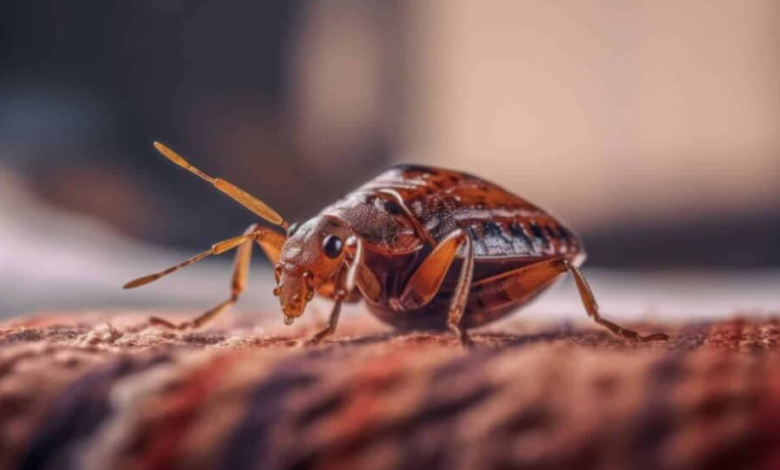How to Get Rid of Bed Bugs Naturally at Home

Bed bugs are tiny, reddish-brown insects that feed on human blood. They often hide in mattresses, bed frames, furniture, and cracks in walls. Bed bugs are notorious for being difficult to eliminate, and while chemical treatments are common, many people prefer natural methods, especially in homes with children or pets. This article will guide you through several effective, natural ways to get rid of bed bugs at home.
Understanding Bed Bugs
Before jumping into treatment options, it’s important to understand how bed bugs operate. They are nocturnal, coming out at night to feed. A single female bed bug ( væggelus ) can lay hundreds of eggs in her lifetime, making infestations grow quickly. Their small size allows them to hide in hard-to-reach places, which is why completely removing them requires a careful and thorough approach.
Common signs of an infestation include:
- Small, itchy red bites on your skin, especially after sleeping
- Blood spots on sheets or pillowcases
- Dark or rusty spots of bed bug excrement on mattresses and furniture
- A musty odor around the bed area
1. Declutter Your Home
The first step in naturally eliminating bed bugs is to declutter your living space. Bed bugs love to hide in small crevices, so reducing clutter will minimize their hiding spots.
- Remove excess papers, clothes, and boxes, especially from around the bed.
- Use sealed plastic containers to store items.
- Regularly vacuum floors, furniture, and mattresses to remove bed bugs and their eggs.
2. Wash and Heat-Treat Bedding and Clothing
Bed bugs and their eggs can’t survive high temperatures. Washing and drying your bedding and clothing at high heat is an effective way to kill them.
- Wash all affected fabrics (sheets, pillowcases, blankets, curtains, and clothing) in hot water.
- Dry them on the highest heat setting for at least 30 minutes.
- For non-washable items, place them in a dryer on high heat or seal them in black plastic bags and leave them in direct sunlight for a day.
3. Vacuum Thoroughly and Regularly
Vacuuming is a crucial part of any natural bed bug removal plan. It helps remove bugs, nymphs, and eggs from surfaces.
- Use a vacuum with a HEPA filter for best results.
- Focus on mattresses, box springs, headboards, bed frames, carpets, and baseboards.
- Vacuum daily, and after each session, seal the vacuum bag or empty the canister into a sealed plastic bag and dispose of it outside your home.
See also: Simplifying Your Business Finances With Bookkeeping 8055905552
4. Use Steam Treatment
Steam is a powerful and natural way to kill bed bugs. It penetrates into cracks and fabrics, reaching the insects and their eggs.
- Use a steamer with a nozzle that reaches at least 160°F (70°C), the minimum temperature needed to kill bed bugs.
- Slowly move the steam cleaner across seams of mattresses, upholstered furniture, baseboards, and other suspected hiding areas.
- Be careful not to blow bed bugs around with high-pressure steam.
5. Apply Diatomaceous Earth
Diatomaceous Earth (DE) is a fine, natural powder made from fossilized algae. It’s harmless to humans and pets but deadly to bed bugs. When bugs crawl over it, DE damages their exoskeleton, causing them to dehydrate and die.
- Use food-grade DE only.
- Lightly sprinkle it around the perimeter of your room, under the bed, along baseboards, and in cracks or crevices.
- Leave it for a few days before vacuuming it up.
- Repeat the process every few days until the infestation is gone.
6. Use Essential Oils
Some essential oils have insecticidal properties and can repel or kill bed bugs.
- Tea Tree Oil: Mix 20 drops with water in a spray bottle and spray on infested areas.
- Lavender Oil: Known to repel bed bugs; add a few drops to a spray bottle with water.
- Peppermint Oil and Eucalyptus Oil: Also effective when diluted and sprayed.
Note: Essential oils are not guaranteed to kill all bed bugs, but they can be part of a comprehensive natural treatment plan.
7. Create Bed Bug Traps
You can make simple traps at home to monitor and reduce bed bug populations.
- Double-sided Tape Trap: Place tape around the bedposts or base of the bed to catch crawling bugs.
- Sugar-Yeast Trap: Mix sugar, water, and yeast in a container to produce carbon dioxide, which attracts bed bugs. Trap them using a rough-sided surface that they can climb but not escape.
8. Encase Your Mattress and Box Spring
Mattress encasements are specially designed covers that trap bed bugs inside and prevent new ones from getting in.
- Choose bed bug-proof encasements that zip up completely.
- Leave the encasements on for at least a year to ensure any trapped bugs die.
9. Seal Cracks and Crevices
Since bed bugs can hide in the tiniest cracks, sealing these spaces will limit their hiding spots and prevent them from moving between rooms.
- Use caulk to seal gaps in walls, floors, and around baseboards.
- Repair wallpaper, wall outlets, and loose tiles where bed bugs could hide.
10. Stay Consistent and Be Patient
Natural methods take time and require persistence. Unlike chemical treatments that may work more quickly, natural remedies need consistent application. For more read https://vaeggelus-fri.dk/
- Monitor the infestation weekly.
- Repeat cleaning and treatment processes regularly.
- Combine multiple methods for best results.
When to Call a Professional
If after several weeks of diligent effort the infestation persists or worsens, it may be time to call a professional pest control service. Look for eco-friendly or heat treatment options if you wish to avoid chemicals.
Final Thoughts
Getting rid of bed bugs naturally at home is entirely possible, but it takes time, effort, and consistency. By combining heat treatments, cleaning routines, natural powders like diatomaceous earth, and essential oils, you can significantly reduce or eliminate a bed bug infestation without resorting to harmful chemicals.
Always act quickly at the first sign of bed bugs, as early intervention is key to preventing a full-blown infestation. With patience and a structured approach, your home can be bed bug-free once again—naturally and safely.




